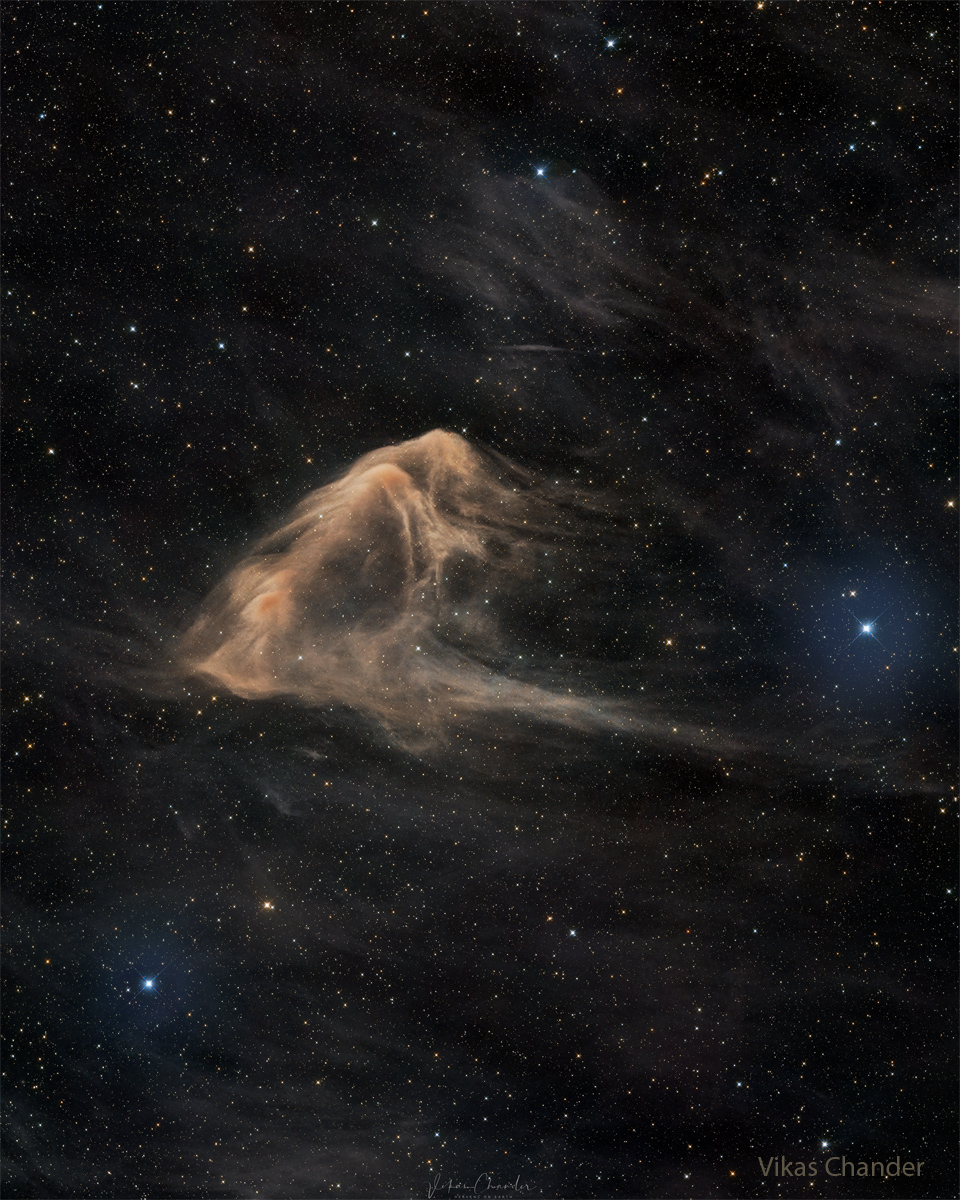Astronomy Picture of the Day
Discover the cosmos! Each day a different image or photograph of our fascinating universe is featured, along with a brief explanation written by a professional astronomer.
Image Credit & Copyright: Vikas Chander
Explanation: This eagle ray glides across a cosmic sea. Officially cataloged as SH2-63 and LBN 86, the dark nebula is composed of gas and dust that just happens to appear shaped like a common ocean fish. The interstellar dust nebula appears light brown as it blocks and reddens visible light emitted behind it. Dark nebulas glow primarily in infrared light, but also reflect visible light from surrounding stars. The dust in dark nebulas is usually sub-millimeter chunks of carbon, silicon, and oxygen, frequently coated with frozen carbon monoxide and nitrogen. Dark nebulas are also known as molecular clouds because they also contain relatively high amounts of molecular hydrogen and larger molecules. Previously unnamed, the here dubbed Eagle Ray Nebula is normally quite dim but has been imaged clearly over 20-hours through dark skies in Chile.
Tomorrow's picture: largest moon
Authors & editors: Robert Nemiroff (MTU) & Jerry Bonnell (UMCP)
NASA Official: Phillip Newman Specific rights apply.
NASA Web Privacy Policy and Important Notices
A service of: ASD at NASA / GSFC,
NASA Science Activation
& Michigan Tech. U.
This is an automated email. If you notice any problems, just send me a note at gtracy@gmail.com. You can add and remove email addresses to this distribution list here, https://apodemail.org.Unsubscribe

No comments:
Post a Comment